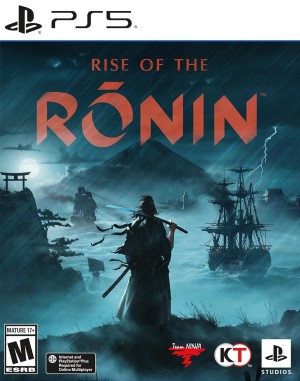
With the PlayStation 4 Pro announcement last week, the cat’s finally out of the bag: both Sony and Microsoft have broken the traditional console cycle and opted instead to release incremental, mid-cycle refreshes. The interesting thing here is that, despite adoption rates for 4K displays that remain relatively low, both manufacturers are firmly positioning their new platforms as 4K consoles. This raises a couple of interesting questions: What benefits, if any, will 1080p gamers gain? But, more importantly, can these consoles deliver playable 4K experiences? As for 1080p, the manufacturer’s apparent denial that the PS4 Pro and Xbox Scorpio represent a new console generation means there isn’t an awful lot to be gained by plugging these machines into 1080p displays: Supersampling anti-aliasing and higher framerates are major plus-points, but at the end of the day, nothing that won’t run on the PS4 or Xbox One will run on the PS4 Pro and Xbox Scorpio because of brand positioning policies.
But what about 4K? Personally, we’ve hooked up an awful lot of graphics cards to 4K (and 1080p) displays, so here’s a truism we’ve picked up from experience: It’s really damn hard to run just about anything at 4K acceptably, with just about any hardware. A $1200 Pascal Titan will give you a compromise-free 4K/60 experience. If you overclock it. Former flagships like the Fury X and 980 Ti will give you…more or less playable framerates if you tone down the settings a little. Something along the lines of the GTX 970 or the R9 390X (a 5.9 Teraflop part offering a near-identical performance profile to the Scorpio’s graphics component), is really not what you’d want to use for a playable 4K experience, unless you drop those settings way, way down. And the 390X is a best-case scenario for the Scorpio.
In real terms, though, what exactly are we looking at in terms of a 4K performance profile for the Scorpio? As we mentioned, at least in terms of compute performance the Scorpio will offer a marginal lead over the R9 390X. The graphics component is supposedly based on AMD’s new Vega GPU, though with a substantial downclock in place owing to thermal constraints. There is a silver lining here: Owing to AMD’s rather notorious thermal management, none of the recent AMD GPUs we’ve tested consistently hit their maximum boost clocks. With clocks already down substantially, and with a console’s thermal constraints in mind, the Scorpio might eke out marginally better performance than the 390X simply on account of thermal throttling not taking place.
As of now, the Playstation 4 and Xbox One typically run multiplats at the equivalent of PC’s medium-high settings. If that kind of visual quality is the target, the Scorpio may very well be able to run AAA games at native 4K, albeit at 30 FPS. While Microsoft hasn’t gotten into specifics about the Scorpio’s CPU, we’d be extremely surprised to see anything drastically different from the PS4 Pro’s setup–essentially just a clockspeed bump. True, the Zen architecture will make its debut next year, but it’s unlikely that Microsoft would make a generational CPU upgrade so late in the game. With that in mind, CPU bottlenecking would ensure that 4K/30 FPS is the likely target for games on the Scorpio. While it’s a far cry from the fully decked-out PC experience, the Scorpio, critically, is just about powerful enough to deliver native 4K experiences with framerates and visual quality on par with what we see on the Xbox One right now.
The Xbox Scorpio enjoys a substantial 1.8 Teraflop advantage in terms of it’s GPU’s compute abilities compared to the PS4 Pro. Assuming that we’re CPU-bound in both cases, the most obvious gains to be had on account of this will be in terms of resolution and framerate. Much like the relationship between the PS4 and the Xbox One, The Xbox Scorpio is likely to hand in games that either run at higher framerates at the same resolution (as in the Tomb Raider remaster), or higher resolutions at an equivalent framerate (many multiplats, for example The Witcher 3.) There is a third possibility here: We need to keep in mind that neither the Xbox Scorpio nor the PS4 Pro are sufficiently powerful to offer compromise-free 4K experiences. Moreover, games are only going to get more graphically intensive as time goes by, not less, making that 4K target even harder to achieve.
If the 1.8 Teraflop difference doesn’t come down to resolution, where will it be seen? It’s possible that further down the line once the 4K console launch hype tones down, the PS4 Pro and Xbox Scorpio will effectively operate like a lower midrange PC and an upper midrange PC–we’ll see framebuffers in the 1440p range on consoles. Quality presets will be the likely differentiator, as they already are in the PC space. While the underlying technology might be the same, the Xbox Scorpio may benefit from greater draw distances in open world games, higher resolution shadows, and higher res textures, courtesy its 12 GB of onboard VRAM. The texture resolution increase is a very likely scenario here: Eurogamer mentioned that the PS4 Pro delivered texture quality that was a notch below the PC’s very high preset on the PS4 Pro, indicating that its 8 GB GDDR5 pool might not be cutting it.
Apart from reduced aliasing, higher-res textures are the most palpable benefit to be had when running games at high resolutions: this could offer the Xbox Scorpio an immediate image quality advantage in most games thanks to its larger pool of memory. Another possibility is that the Xbox Scorpio may feature additional graphical “frills,” that the PS4 Pro will not. Intensive techniques such as contact-hardening shadows and HBAO ambient occlusion aren’t part of the core graphical experience, but they can add an extra layer of refinement. If resolution and framerate and normalised, these are the areas where we’d likely see the 1.8 Teraflop advantage.
The PS4 Pro, on the other hand, features a much weaker Polaris 10-based GPU that delivers just 4.2 Teraflops of compute and features substantially lower memory bandwidth, at 216 GB/S. Resolution tends to scale with memory bandwidth, so this is an aspect that could further hurt the PS4 Pro at 4K, compared to the Scorpio. The PS4 Pro’s performance profile is likely to be in line with the R9 380X, AMD’s midrange stop-gap effort from last year. We’d benched the 380X last year and found that it handed in some solid framerates at 1080p, in the 40-60 FPS range with settings maxed out. It’s important to note that, with an i5-4440, we weren’t CPU bound like the PS4 Pro will be. Irrespective of this, the 380X is simply not an option for 4K gaming.
There’s simply not enough horsepower there to drive AAA games at such a high resolution. So what’s a 1080p part doing in a purportedly 4K console? Well, the answer to that is that it’s actually a *cough cough* 1440p console. We talked about the PS4 Pro’s checkerboard upscaling approach to 4K gaming earlier here. A GPU component with the same performance profile as the 380X is a viable candidate for a 30 FPS experience at 1440p, provided you tone your graphics settings down a bit. Checkerboard and temporal reconstruction processes like what we saw in Rainbow Six: Siege are innovations borne out of necessity. Games visuals aren’t going to get any less intensive as time progresses. Yet, at the same time, people are adopting higher-resolution displays at an unprecedentedly high rate.
We’d need to get up close to the PS4 Pro’s checkerboard games to evaluate the difference between a checkerboard upscale and native 4K: just how much of a difference that is will go a long way towards describing the qualitative difference in image quality between the Pro and the Xbox Scorpio. Prior to their respective reveals in 2013, Sony and Microsoft had engaged in a kind of tech arms race when it came to the Xbox One and the PS4: There was no guarantee that prices for GDDR5 modules would come down enough for the PS4 to viably utilise 8 GB of GDDR5. Microsoft hedged its bets by making use of 8 GB of GDDR3, expecting Sony to come up short in this respect.
Likewise, Microsoft’s belief that Kinect would take off led to their sacrificing on the Xbox One’s graphics component in order to bundle in the Kinect–in the end, they wound up with an underpowered, overpriced console. Sony seems to have gotten short shrift this time around, with the PS4 Pro launching with a GPU that’s substantially slower than what the Xbox Scorpio will feature. The immediate consequence of this is the resolution gulf we mentioned, which draws parallels to the “Resolution-gate” controversy when the PS4 and Xbox One had just launched. Ironically, this time around it’s the PS4 Pro that’s at a substantial disadvantage.
What will the PS4 Pro’s GPU disadvantage translate into in real-world terms when stacked up against the Xbox Scorpio? While we mentioned the possible implications if framerate and resolution are normalised, in the real world, we think that the Pro and Scorpio will share the same relationship the PS4 and Xbox One share: in most AAA games, the PS4 and Xbox One hand in largely the same performance figures, with equivalent visual quality, but with the PS4 running at 1080p and the Xbox One running at 900p. Likewise, we see the PS4 Pro running most AAA titles at 1440p, upscaled to 4K via the checkerboard method, and the Xbox Scorpio running the same titles in native 4K. With both being held back by the need to support both the PS4 and the Xbox One, we don’t expect to see else apart from this: We’ll have a 900p console–the Xbox One, a 1080p console–the PS4, a 1440p console–the PS4 Pro, and a 4K console–the Xbox Scorpio. Basically, you get to pick and choose from the whole range of AMD’s GPU back stock. If it’s really come to that, why not just build a PC?
















Share Your Thoughts Below (Always follow our comments policy!)